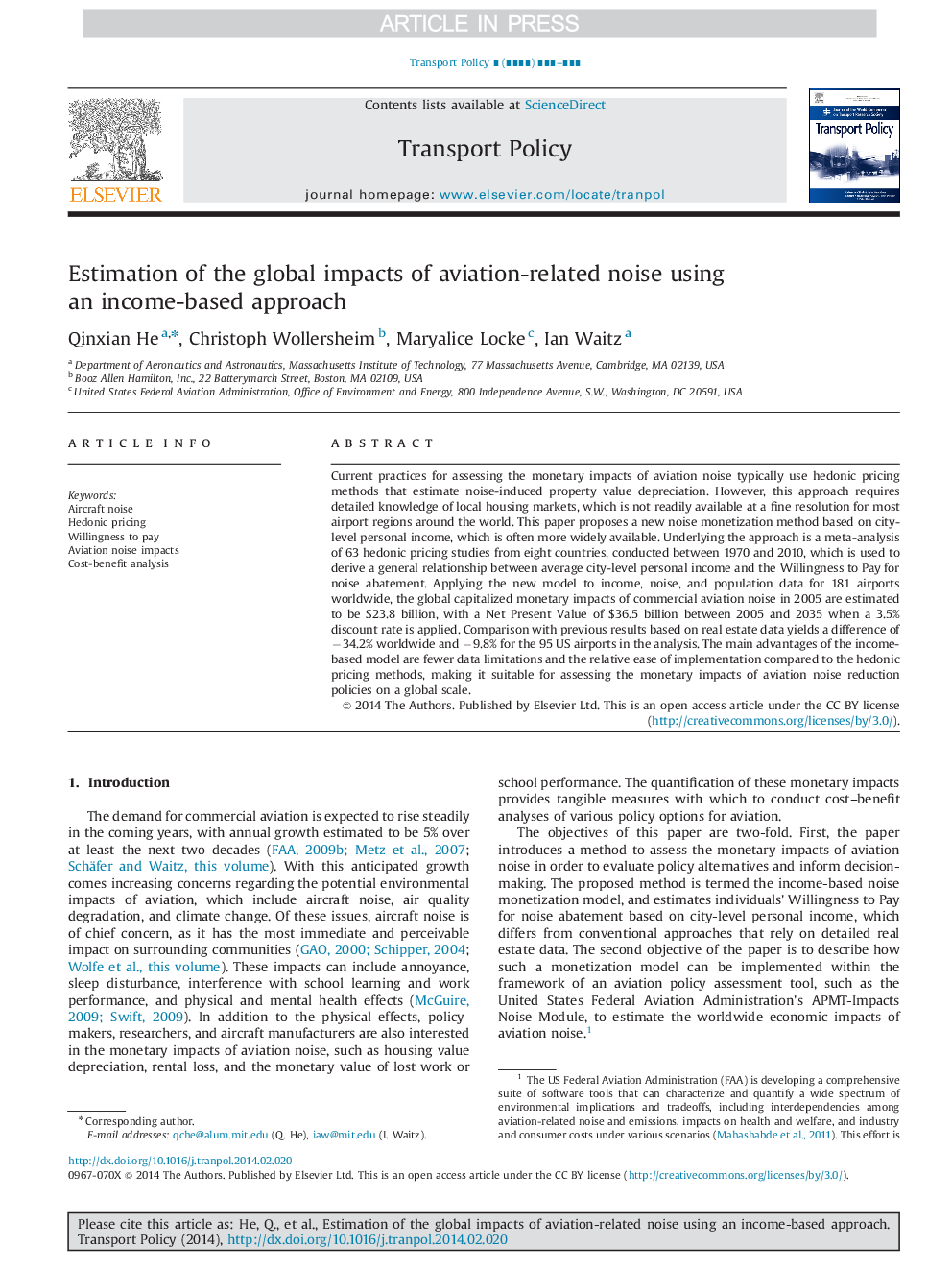| Article ID | Journal | Published Year | Pages | File Type |
|---|---|---|---|---|
| 7497936 | Transport Policy | 2014 | 17 Pages |
Abstract
Current practices for assessing the monetary impacts of aviation noise typically use hedonic pricing methods that estimate noise-induced property value depreciation. However, this approach requires detailed knowledge of local housing markets, which is not readily available at a fine resolution for most airport regions around the world. This paper proposes a new noise monetization method based on city-level personal income, which is often more widely available. Underlying the approach is a meta-analysis of 63 hedonic pricing studies from eight countries, conducted between 1970 and 2010, which is used to derive a general relationship between average city-level personal income and the Willingness to Pay for noise abatement. Applying the new model to income, noise, and population data for 181 airports worldwide, the global capitalized monetary impacts of commercial aviation noise in 2005 are estimated to be $23.8 billion, with a Net Present Value of $36.5 billion between 2005 and 2035 when a 3.5% discount rate is applied. Comparison with previous results based on real estate data yields a difference of â34.2% worldwide and â9.8% for the 95 US airports in the analysis. The main advantages of the income-based model are fewer data limitations and the relative ease of implementation compared to the hedonic pricing methods, making it suitable for assessing the monetary impacts of aviation noise reduction policies on a global scale.
Related Topics
Social Sciences and Humanities
Social Sciences
Geography, Planning and Development
Authors
Qinxian He, Christoph Wollersheim, Maryalice Locke, Ian Waitz,
